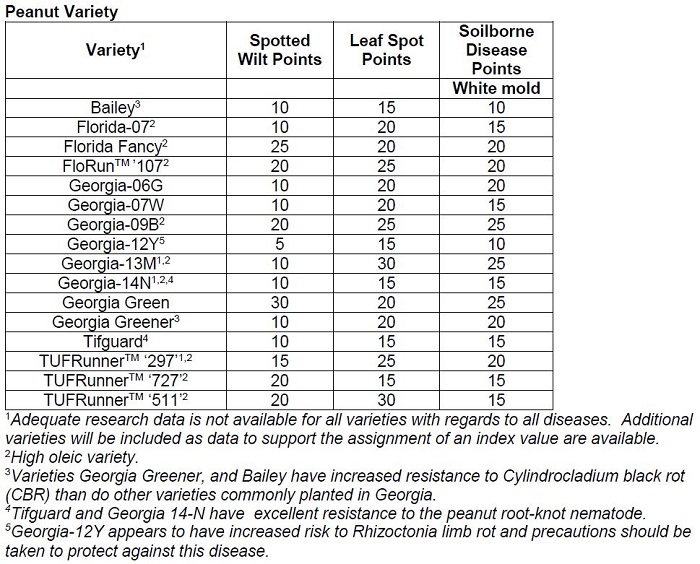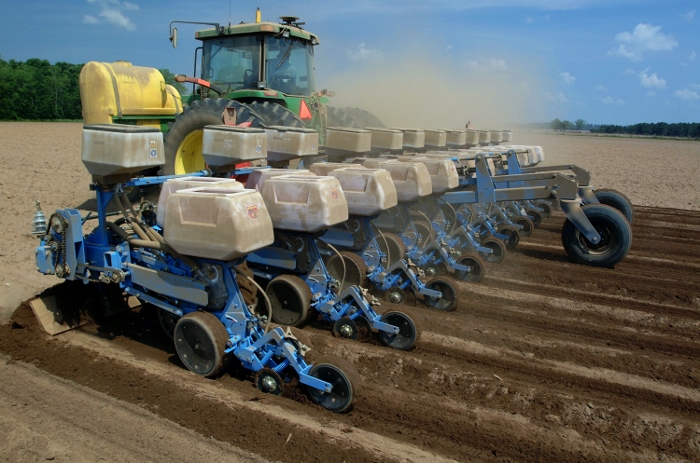
Peanut margins are predicted to be tight this year. According to the UGA Crop Comparison Tool, dryland peanuts will struggle to cover production costs. In tight years the importance of each management decision is magnified. All options should be carefully analyzed to determine the most economically viable production practices. Photo credit: IFAS Communications
The predictions for 2016 crop prices are, let’s just say, less than ideal. In years like this there is a natural tendency for farmers to look for corners to cut, in an attempt to keep production cost lower. However, more often than not, cut corners lead to a reduction in yield; low prices and low yields are worse for the bottom line than low prices and solid yields. This is not news, we all know that skimping on inputs is not part of the formula for producing a good crop. All that said, in peanuts there are some production factors that can be evaluated and tweaked on a field by field basis, which may allow for some cost savings without sacrificing yield.
Variety Selection
There are many factors to consider here. Yield is only part of the equation; granted, it is a large part. When looking at yield data, I recommend that you consider multiple years and multiple locations. Just because a variety put up ridiculously high numbers in one trial doesn’t mean you should necessarily expect it to do that on your farm. Production practices associated with the variety trials, especially irrigation, should be considered. Look for consistent high production under conditions similar to those on your farm. (See 2016 Peanut Variety Update for the results of trials in Florida).
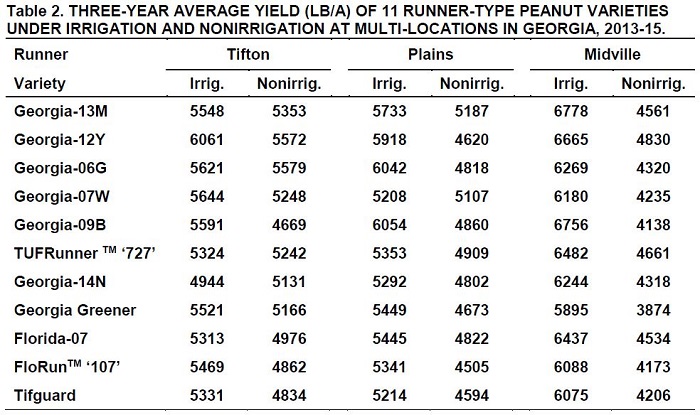
Data from University of Georgia 2016 Peanut Update
By: Monfort, Knox, Smith, Smith, Branch, Tubbs, Porter, Kemerait, Brenneman, Culbreath, Abney, Prostko
Seed Size
Seed size is another factor that should be considered. Seed cost is a significant expense (15-20% of the variable cost per acre). Smaller seeded varieties allow for potentially reduced seed cost, without reducing the number of seeds planted. Seeding rates are calculated based on number of seed per acre, but seed is sold by the pound. Smaller seeds equate to more seeds per pound, each bag goes a little further, so fewer bags are needed. A good target is six seeds per row foot. If you are planting much more than that, it is unlikely you will see an increased yield as a result of the extra seeds.
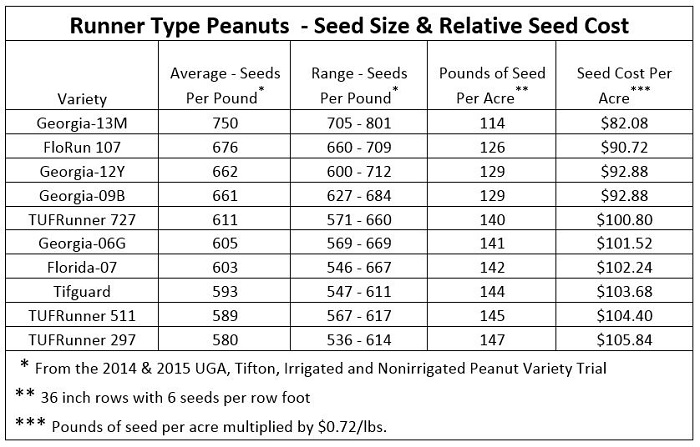
Number of seed per pound varies, ranges and averages shown were compiled from multiple sources. The chart is intended only to illustrate the variation between varieties and how that variation effects seed cost.
Disease Resistance
Disease resistance is another important factor to remember when selecting a variety. Yes, we have excellent crop protection products, but it is still advisable to take advantage of the disease resistance packages that are bred into our modern peanut varieties. Not all varieties have the same levels of resistance to all pathogens. Consider selecting varieties that best address your greatest disease concerns on a field by field basis. Below is a disease risk index from Peanut Rx, lower point values equate to grater disease resistance.
For each of the following factors that can influence the incidence of tomato spotted wilt or fungal diseases, the grower or consultant should identify which option best describes the situation for an individual peanut field. An option must be selected for each risk factor unless the information is reported as “unknown”. A score of “0” for any variable does not imply “no risk”, but that this practice does not increase the risk of disease as compared to the alternative. Add the index numbers associated with each choice to obtain an overall risk index value. Compare that number to the risk scale provided and identify the projected level of risk.
From Peanut Rx
Selecting the best variety is a balancing act, there are multiple factors – more than those discussed, that must be considered simultaneously. There is no one right answer, even on the same farm utilizing multiple varieties is often the most efficient course of action.
Chemical Cost
Chemical cost is generally the largest variable cost associated with peanut production. Fungicides are a large portion of these costs. Selecting a spray program that maximizes your return on investment is key. Each field is different; past disease pressure, cropping history, variety planted, plus other agronomic factors, all effect the potential for various pathogens to become a problem. Pairing the appropriate spray program and products to the anticipated disease pressure will help to maximize return on investment. Remember, there is a difference between cost and value. Value is a factor of cost and effectiveness. There are situations where higher priced products will have a greater value and there are situations where lower priced products will have a greater value. Identifying these situations is essential to maximizing the return on your investment. Assessing the disease risk of each of your fields with the Peanut Rx tool is a great first step to maximizing your return on fungicide investment. Once a disease assessment has been made on each field, an appropriate spray program can be planned.
Pod-blasting and Boarding
Pod-blasting and boarding, or scanning a representative sample from each field to determine optimum harvest time will help to ensure that yield and grade potential of a field is not sacrificed through premature harvest. This is particularly important on dry-land peanuts; the expected days-to-maturity for a specific variety do not account for delays that can be associated with drought stress. Pod-blasting and boarding don’t cost anything but time, while harvesting at optimum maturity can substantially increase grade and yield.
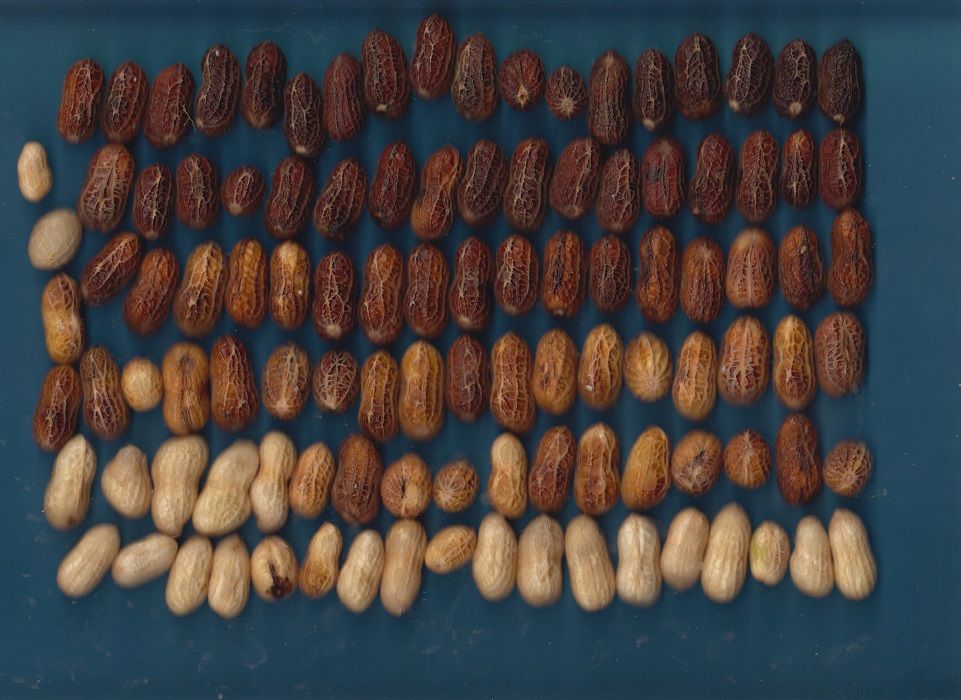
“Blasted” pods prepared for scanning. The scanned image is analyzed to determine maturity and generate a recommended harvest date.
Photo credit: Mark Mauldin
For help with variety selection, Peanut Rx, pod-blasting or anything else discussed, contact your county’s agriculture extension agent. Take advantage of any and all available resources that can help reduce costs or increase productivity this crop year.
- Peanut Maturity Update – 10/9/25 - October 10, 2025
- Fall Can be a Great Time for Vegetation Management - October 3, 2025
- Peanut Maturity Update – 9/25/25 Edition - September 26, 2025

